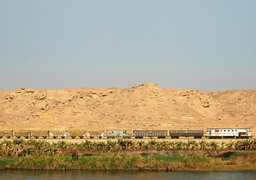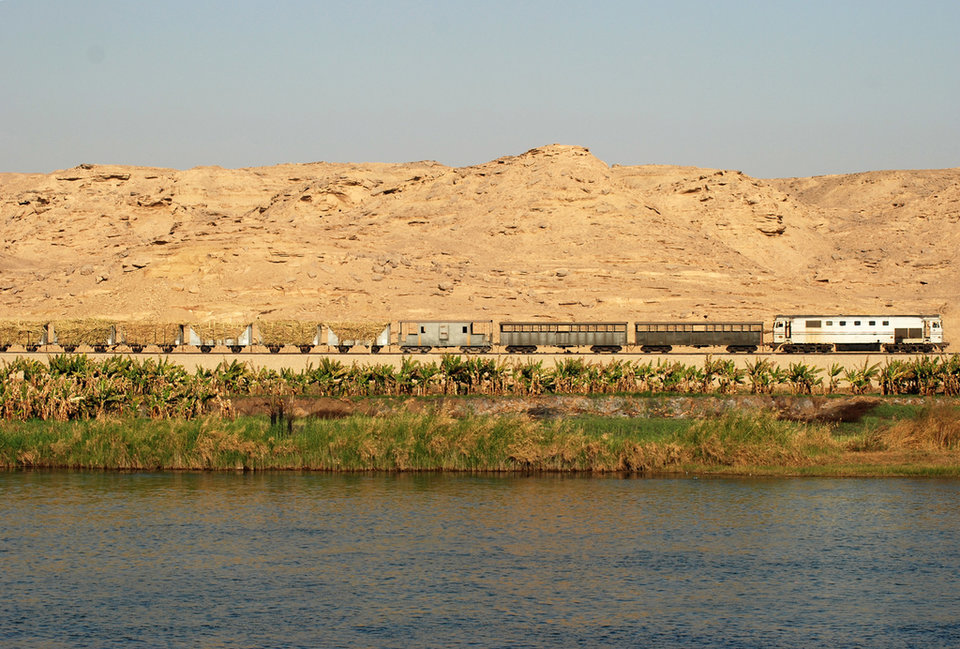Profile
Pyramid schemes:
a look into Egypt’s megaprojects
Pyramid schemes: a look into Egypt’s megaprojects
In the last seven years, Egypt has invested heavily in renewing its centuries-old infrastructure, in particular railways, striking up deals with international organisations such as the European Investment Bank and World Bank as well as companies such as Siemens. Ilaria Grasso Macola explores the biggest projects Egypt has invested in.
Inthe last few years, Egypt has seen an exponential increase in funding for infrastructure. According to research by KPMG, transport – and in particular railways – have in the last few years become one of the main economic drivers.
In 2014 Egyptian National Railway (ENR) announced a ten-year investment of $10bn (£7.2bn) to upgrade the railway network, and ever since the country has kept on investing.
GlobalData’s February ‘Rail Construction Projects – Middle East’ report shows investment in the Egyptian railway projects pipeline is around $50bn (£36bn), with 45% of this funding being used to finance current projects.
“Egypt is in the process of overhauling the country’s railways including the infrastructure, rail lines, and building new stations,” reads the report. “Works continue on the $20bn Cairo Metro Network, comprising six lines, and improving the quality and level of urban transport services in the city.”
We have a look at some of the biggest railway projects the Egyptian Government has embarked upon in the last couple of years.
Brightline senior vice president, corporate affairs, Ben Porritt

Egypt’s first electric high-speed train
In January, Siemens Mobility signed a memorandum of understanding (MoU) with the Egyptian transport ministry for the development of the country’s first-ever electric high-speed railway.
With an initial order value of $3bn (£2.2bn), the first 460km will connect the city of El-Alamein on the Mediterranean Sea to Ain Sokhna on the Red Sea at high speed, passing through New Administrative Capital, a new city that is being built 45km east of Cairo to relieve the pressure from the capital’s metropolitan area.
“We are delighted that the Ministry of Transport is seeking to put their trust in us to deliver this important project,” said Siemens Mobility CEO Michael Peter. “Our digital leadership and comprehensive turnkey services will bring an integrated and state of the art high-speed rail system, that will provide a technology boost for the country and create local jobs.”
By building a high-efficiency rail system for the country, we will support the Egyptian people with affordable, clean and reliable transportation.
In an interview with Egyptian daily newspaper Al-Masry Al-Youm, Siemens CEO and president Joe Kaeser said that the project’s initial phase will create 15,000 jobs as well as 2,000 permanent positions.
The contract’s terms include design, installation as well as commission and 15-year maintenance, and 15 stations are expected to be completed in two years.
The 460km-connection is the first part of the project, which when completed will consist of a 1,000km railway system network worth $23bn (£16.6bn).
"We are honoured and proud to expand our trustful partnership with Egypt. By building a high-efficiency rail system for the country, we will support the Egyptian people with affordable, clean and reliable transportation," said Kaeser when signing the MoU in January.
Restructuring the Egyptian National Railways
The high-speed railway is not the only railway project the Egyptian Government has focused on this year.
In March, the World Bank approved a $241m (£174m) loan, which will go towards the restructuring of the ENR, including the modernisation of signalling on the Alexandria to Cairo and Beni Suef to Nag Hammadi routes.
The loans will also be used to improve passenger safety and punctuality, increasing the number of trains running on time from 75% to 90%.
Improving the service for millions of passengers per day is a priority.
“Modernising and reforming Egypt’s railways is critical to meeting citizens’ travel needs and boosting the overall economy,” Egyptian transport minister Kamel El Wazir said.
“Improving the service for millions of passengers per day is a priority, particularly because citizens depend on ENR to access jobs and do other tasks, including fulfilling personal errands.
“Increasing freight transport is also a critical objective, which will increase the economy’s overall competitiveness.”

Lisbon, Portugal.
Modernising railway, renewing metro
Intense modernisation works started in 2020 when the European Investment Bank announced in February that it would grant Egypt €2.7m for two railway projects, the upgrade of the railway line that connects the cities of Tanta and Damietta and the renewal of Cairo Metro Line 2.
Worth €1.5m, the project will involve a feasibility study – including an environmental and social impact assessment – as well as works to improve railway safety. Out of the 118km of modernisation works, 65km – which connect the cities of El Mansoura and Damietta – will undergo track doubling.
Other improvements will include the installation of a signalling system as well as a freight yard to Damietta port.
“The current upgrade of Tanta – El Mansoura – Damietta railway goes in line with the EU policy which aims at improving living standards of millions of Egyptian commuters using this important artery through the implementation of an enhanced quality and safe transport system,” EU ambassador to Egypt Ivan Surkoš said.
A further €1.2m will be directed towards a feasibility study for the upgrade and renewal of the Cairo line 2, which will focus primarily on infrastructure and rolling stock – expanding the line’s life expectancy for another 25 years.